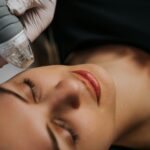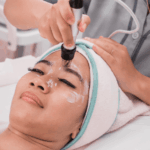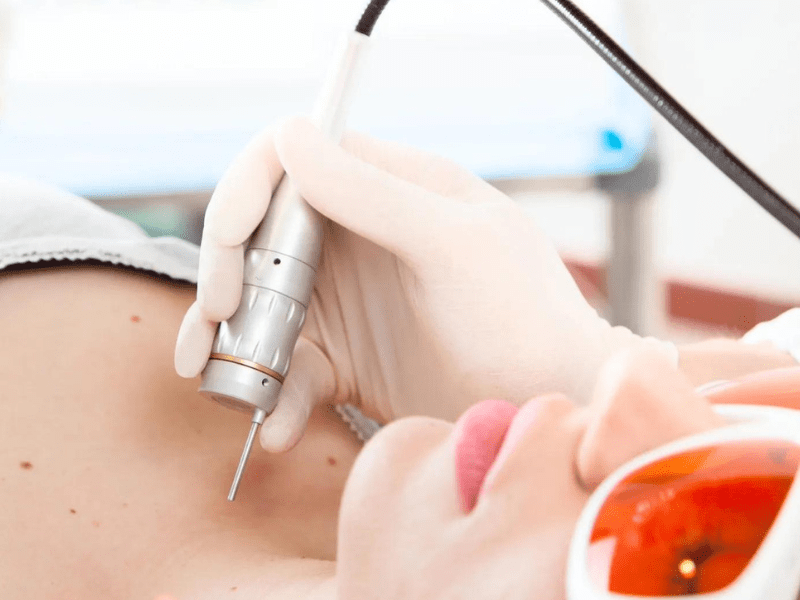SCAR REVISION: ENHANCE APPEARANCE AND FUNCTION Scar revision treatments aim to improve the appearance of scars, whether caused by surgery, injury, acne, or other factors. The choice of treatment depends on the type of scar, its size, location, and the patient’s individual characteristics. In addition to cosmetic improvements, revising scars can also decrease contracture and …
SCAR REVISION: ENHANCE APPEARANCE AND FUNCTION
Scar revision treatments aim to improve the appearance of scars, whether caused by surgery, injury, acne, or other factors. The choice of treatment depends on the type of scar, its size, location, and the patient’s individual characteristics. In addition to cosmetic improvements, revising scars can also decrease contracture and improve movement and function.
Understanding Scar Types
Before delving into treatment options, it’s essential to understand the different types of scars:
- Hypertrophic Scars: Raised scars that remain within the boundaries of the original wound.
- Keloid Scars: Raised scars that extend beyond the original wound boundaries.
- Atrophic Scars: Depressed scars often caused by acne or chickenpox.
- Contracture Scars: Scars that restrict movement, usually resulting from burns.
Best Treatments for Scar Revision
- Silicone Gel Sheets or Gels Silicone-based products are widely used for both old and new scars. These treatments help soften and flatten scars over time by maintaining hydration and creating a protective barrier. They are easy to use and can be applied to various scar types, including hypertrophic and keloid scars.
- Minimally Invasive Procedures
- Microdermabrasion: This procedure exfoliates the top layer of the skin, promoting new skin growth and reducing the appearance of superficial scars. It’s a non-invasive option suitable for minor scars.
- Microneedling: Also known as collagen induction therapy, microneedling involves using tiny needles to create controlled micro-injuries in the skin. This process stimulates collagen production, improving the texture and appearance of scars. It’s effective for various scar types, including atrophic scars.
- Laser Therapy: Various lasers, such as fractional lasers or pulsed-dye lasers, can target scar tissue and stimulate collagen remodeling. Laser treatments can improve the color, texture, and overall appearance of scars. They are particularly useful for hypertrophic and atrophic scars.
- Injectable Treatments
- Dermal Fillers: For depressed scars, dermal fillers can be injected beneath the scar to raise it to the level of surrounding skin. This treatment is temporary but can significantly improve the appearance of atrophic scars.
- Steroid Injections: These injections can help flatten and soften hypertrophic or keloid scars by reducing inflammation and promoting collagen breakdown. They are effective in managing raised scars but may require multiple sessions.
- Platelet-Rich Plasma (PRP): PRP injections utilize the patient’s own blood components to stimulate healing and improve scar texture. This natural treatment enhances skin regeneration and can be combined with other therapies for better results.
- Layering Treatments Often, combining different treatments can yield more comprehensive results. For example, laser therapy followed by microneedling can effectively remodel scar tissue and enhance skin texture. Layering treatments allows for a multi-faceted approach, addressing various aspects of scarring.
- Skin Grafting For larger scars, skin grafting involves taking a piece of skin from another part of the body and transplanting it to cover the scarred area. This procedure is more invasive and typically reserved for severe cases, such as extensive burn scars or large surgical scars. Skin grafting can improve both appearance and function, especially for contracture scars that limit movement.
Factors Influencing Treatment Choice
Selecting the right scar revision treatment depends on several factors:
- Scar Type: Different scars respond better to specific treatments. For instance, atrophic scars benefit from fillers and microneedling, while hypertrophic scars may require steroid injections and laser therapy.
- Scar Location: The location of the scar can influence the choice of treatment. For example, facial scars might be treated with more precision-focused methods like laser therapy, whereas larger body scars might need more extensive procedures like skin grafting.
- Patient’s Skin Type: Skin type and color can affect treatment outcomes. Certain lasers may not be suitable for darker skin tones due to the risk of pigmentation changes.
- Patient’s Overall Health: The patient’s general health and medical history play a crucial role in determining the most appropriate treatment. Some procedures may not be recommended for individuals with certain medical conditions.
Benefits of Scar Revision
Scar revision treatments offer numerous benefits beyond cosmetic improvement:
- Improved Appearance: Treatments can significantly reduce the visibility of scars, making them less noticeable and improving the overall aesthetic of the skin.
- Enhanced Function: Revising contracture scars can restore movement and flexibility, improving the functional aspects of the affected area.
- Boosted Confidence: Reducing the appearance of scars can enhance self-esteem and confidence, especially for visible scars that may affect a person’s self-image.
- Minimal Downtime: Many scar revision treatments are minimally invasive, requiring little to no downtime. Patients can often return to their regular activities shortly after the procedure.
Post-Treatment Care
Proper aftercare is essential to maximize the benefits of scar revision treatments:
- Follow Medical Advice: Adhere to the aftercare instructions provided by your healthcare provider to ensure optimal healing and results.
- Protect the Skin: Protect the treated area from sun exposure by using sunscreen and wearing protective clothing. UV rays can interfere with the healing process and worsen scarring.
- Hydrate and Moisturize: Keeping the skin hydrated and moisturized can support the healing process and improve the final outcome.
- Avoid Picking or Scratching: Do not pick or scratch at the treated area to prevent infection and further scarring.
Conclusion
Scar revision treatments offer effective solutions for reducing the appearance of scars and improving function. From silicone gels and minimally invasive procedures to injectable treatments and skin grafting, there are various options available to address different scar types and patient needs. By consulting with a qualified professional, patients can develop a personalized treatment plan that delivers the best results, enhancing both appearance and quality of life. Whether dealing with surgical scars, injury scars, or acne scars, modern scar revision techniques provide promising outcomes for a smoother, more confident future.











